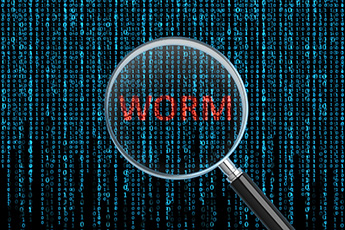Most of us are familiar with Life Savers Candy. But did you know it was first introduced 109 years ago? Clarence Crane of OH created it as a candy that could withstand the summer heat and named it based on its “life preserver shape.” Another lifesaver has been the PPP and there are more changes that could continue to help.Many community financial institutions (CFIs) have experienced first-hand how the Paycheck Protection Program (PPP) has helped many small businesses survive. But, it has been challenging to keep up with some of the updates. For this reason, we give you the latest PPP changes so that you can keep your small business customers informed and effectively manage the PPP process. 1. The program has been extended. It was set to expire on March 31st, but last month Congress pushed the date to June 30, 2021. To clarify, financial institutions can now submit new applications for PPP loans on behalf of their small business customers up until May 31. Then, for the last 30 days of the program (from June 1 until June 30), the Small Business Administration (SBA) will only process applications submitted prior to June 1 and no longer accept any new loan applications.The American Institute of CPAs (AICPA) said that the 60-day extension gives the SBA more time to address significant loan application process challenges. Indeed, 190K applications had been held up since mid-March, due to unresolved error codes within the SBA’s process to validate whether an application was fraudulent, the agency said.2. Potentially more proceeds are available for Schedule C filers. Individuals who file a Schedule C can now calculate their maximum loan amount using either net profit or gross income (with certain calculations), per the SBA’s recently issued interim final rule. The SBA said it was aware of significant concerns with the previous requirement for Schedule C filers to only use net profit, because it didn’t take into account fixed and other business expenses that must be covered to stay in operation, and therefore keep the owner employed. Subsequently, that could result in a loan amount that is not as helpful.However, the change only applies to PPP loans approved after March 4, 2021. The AICPA is now lobbying the federal government to make the change retroactive, so earlier PPP borrowers can seek additional funding using gross income instead of net profit in their calculation.3. Eligibility has been expanded. The SBA interim final rule also changed several eligibility requirements, including shortening the timeframe for ineligibility for individuals convicted of non-financial felonies. Previously such individuals were ineligible if they had been convicted within the past 5Ys. Now, only individuals who had been convicted within the past year are not eligible. However, the 5Y “lookback” remains for individuals convicted of a felony involving fraud, bribery or embezzlement, to ensure that “basic guardrails against fraud exist for this emergency program.”The SBA also now allows individuals who are delinquent or have defaulted on government-guaranteed student loans to apply for PPP loans.4. New and updated forms for efficient processing. The SBA also released six updated or new application forms, including updated PPP borrower first-draw (Form 2483) and second-draw (Form 2483-SD) application forms; new PPP first-draw (Form 2483-C) and second-draw (Form 2483-SD-C) borrower application forms for Schedule C filers using gross income; a revised lender application form for PPP loan guaranty (Form 2484); and a revised PPP second-draw lender application form (2484-SD). Make sure that you are using up-to-date forms as you continue to work with your customers on this funding so they get the full benefits of these changes.These changes can measurably impact the livelihood of many of your small business customers, so it is important to inform them of these updates and process their funds according to the new modifications. Check the SBA PPP website for the latest information.

BID® Daily Newsletter
Apr 21, 2021
BID® Daily Newsletter
Apr 21, 2021

Stay On Top Of PPP Changes For Your Customers
Summary:
The Paycheck Protection Program has been a lifesaver for many small businesses. With some recent changes, both your current business customers and new ones could still receive much-needed assistance. The program has been extended, proceeds have potentially increased for Schedule C filers, eligibility has been expanded, and new forms facilitate streamlined processing.
Subscribe to the BID Daily Newsletter to have it delivered by email daily.
Related Articles:

5 Tips To Tap into the SMB Market
In its Voice of Community Banks Survey, BNY uncovers opportunities for CFIs to capitalize on untapped potential in the SMB market.
In its Voice of Community Banks Survey, BNY uncovers opportunities for CFIs to capitalize on untapped potential in the SMB market.

The Cyber Ripple Effect: When SMB Breaches Hit CFIs
SMB cyberattacks are rising as CFIs face growing counterparty risk. How do customer-side breaches impact credit, liquidity, and reputation — and what CFIs can do now to prepare?
SMB cyberattacks are rising as CFIs face growing counterparty risk. How do customer-side breaches impact credit, liquidity, and reputation — and what CFIs can do now to prepare?
